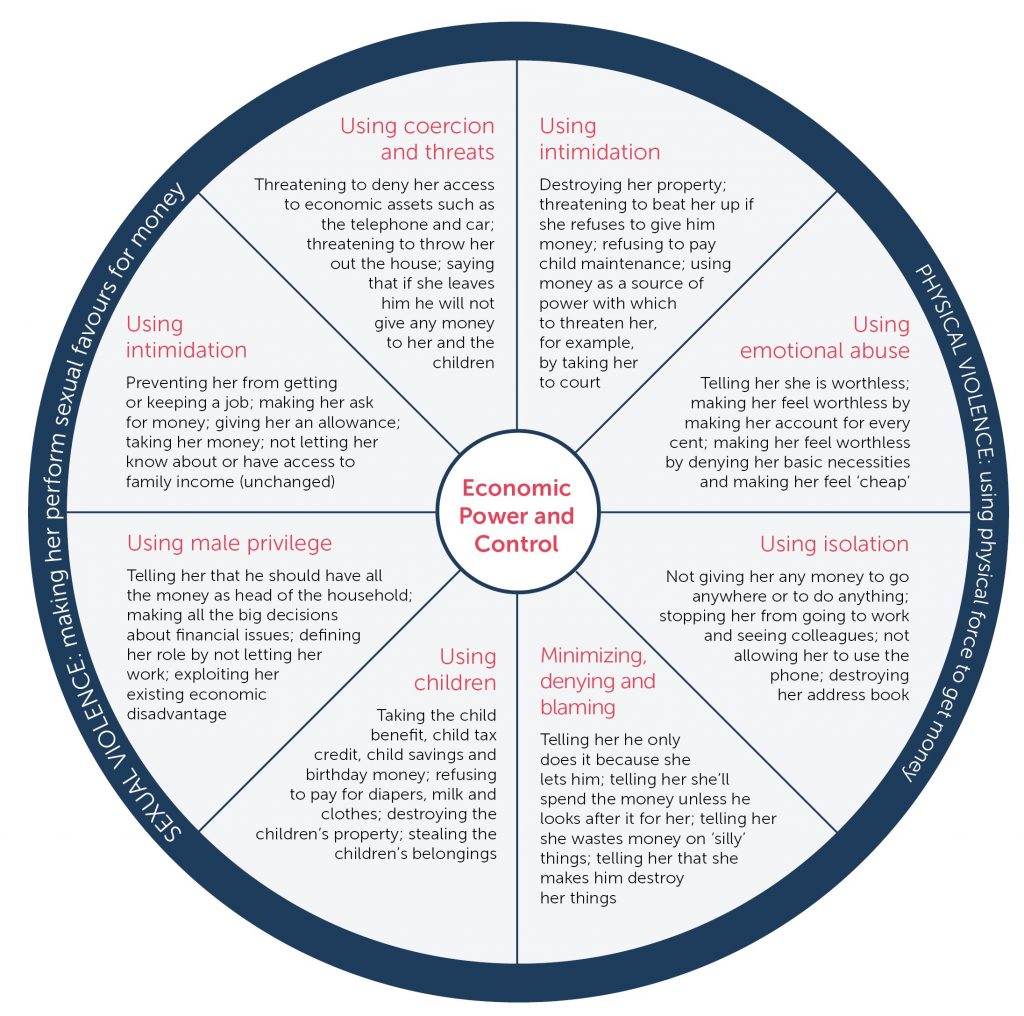ECONOMIC ABUSE POWER CONTROL WHEEL
CANADIAN CENTER FOR WOMEN'S EMPOWERMENT
Here at the Canadian Center for Women’s Empowerment we use the Economic Abuse Power Control Wheel. This wheel is an adapted version of the Duluth Power and Control Wheel, by Surviving Economic Abuse. Giving examples of controlling behaviour that impact on a woman’s economic freedoms, such as preventing her from working, taking children’s birthday money or not letting her have access to money (Sharp, 2008).

Adapted with permission from:
DOMESTIC ABUSE INTERVENTION PROGRAMS,
202 East Superior Street, Duluth, Minnesota 55802, 218-722-2781 http://theduluthmodel.org
Sharp, N. (2008) ‘What’s yours is mine’ The different forms of economic abuse and its impact on women and children experiencing domestic violence, Refuge
Think of the wheel as a diagram of the tactics an abusive partner uses to keep their victim in the relationship. While the inside of the wheel is comprised of subtle, continual behaviors, the outer ring represents physical, visible violence. These are the abusive acts that are more overt and forceful, and often the intense acts that reinforce the regular use of other more subtle methods of abuse.
*Although this Power & Control Wheel uses she/her pronouns for the victim and assumes a male perpetrator, abuse can happen to people of any gender in any type of relationship.
WHAT IS FINANCIAL ABUSE?
According to the Department of Justice, financial abuse happens when someone uses money or property to control or exploit someone else. It can involve taking someone money or property without permission, withholding or limiting money to control someone, pressuring someone to sign documents, forcing someone to sell things or change a will. Most forms of financial abuse are crimes, including theft and fraud.
However, the research evidence base suggests that financial abuse is more complex than this. Sharp (2008) identifies four different ‘types’ of financial abuse: interfering with employment; controlling access to financial resources; refusing to contribute to financial costs; and generating financial costs. This is broadly consistent with Postmus et al. (2012) who suggest three forms of financial abuse: financial control, financial exploitation and financial sabotage.
Form of financial abuse example
If you are a victim of economic abuse within the context of domestic abuse or are supporting someone who is in that situation, Check resources that can help.

